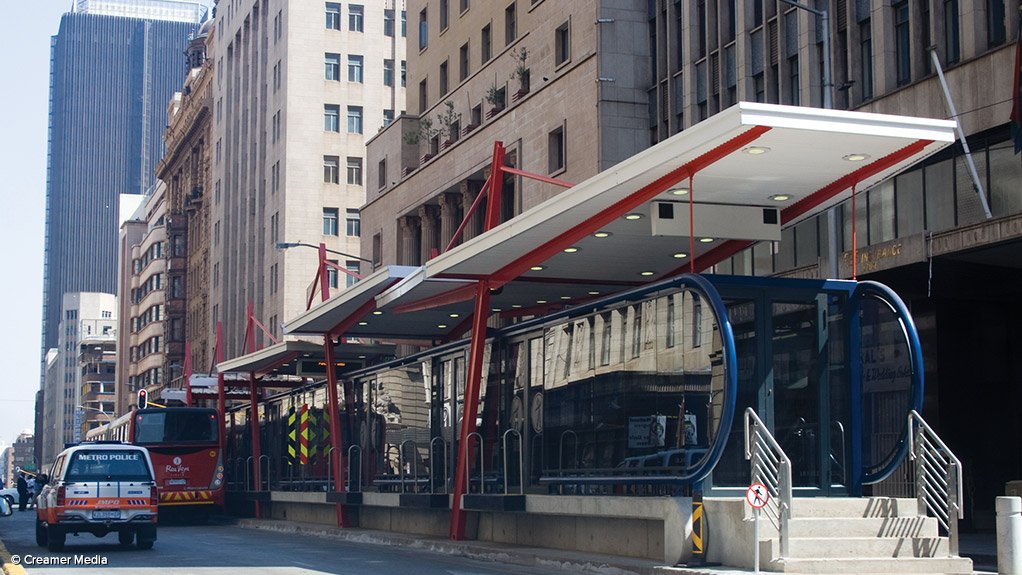Through its October Transport Month campaign theme of ‘Transport Moving the Economy Forward’ the Gauteng Department of Roads and Transport was responding to Gauteng Premier David Makhura’s call for the modernisation of public transport infrastructure as one of the ten pillars of the transformation, modernisation and reindustrialisation of Gauteng, Gauteng Roads and Transport MEC Dr Ismail Vadi said on Thursday.
Officially launching the province’s 2014 Transport Month campaign at the City Deep inland hub, in Johannesburg, Vadi said that, in addition to the objectives set out by the Premier, the Gauteng Roads and Transport Department also wanted to meet the new administration’s objectives of decisive spatial transformation and developing township economies.
“This transport month theme wants to talk to the linkages [between] public transport, freight and growing the economy,” he said.
Vadi noted that, during the campaign, the department would focus strongly on road freight and rail transport segments, including ways to improve the use of rail for public transport.
The department would also continue to push for the use of nonmotorised transport to lead to a society where cycling became “more than just a recreational activity”, Vadi said, stating that he wanted a lifestyle and culture change to occur which would lead to more people cycling to work.
He added that this approach was consistent with the department’s 25-Year Integrated Transport Master Plan (ITMP25), which estimated that Gauteng’s population would double over the next 20 years, which meant that the province would have serious land concerns in future.
Vadi said it was estimated that about 20 000 people came to Gauteng on a daily basis to look for employment, which meant that “densification”, combined with effective public transport, would be key going forward.
Therefore, the department, in conjunction with local municipalities had developed a set of interventions aimed at transforming public transport into an integrated, accessible reliable, safe and affordable system, he stated.
These interventions included the development of an integrated 800 km bus rapid transit (BRT) system across the three metropolitan municipalities.
Currently, the City of Johannesburg BRT system’s third phase was being rolled out, while Phase 1 of the Tshwane system would be launched in November. Work was also being done on a BRT system for Ekurhuleni.
Further, the Passenger Rail Agency of South Africa had also prioritised the revitalisation of the Metrorail system in Gauteng through the acquisition of new rolling stock, the development of a new signalling system and the introduction of new services on selected routes.
Meanwhile, Vadi also announced that the 5-Year Aerotropolis Implementation Plan, for the creation of an airport city around OR Tambo International Airport, would soon be published for public comment and was expected to be finalised by the end of this year.
He added that this development had the potential to create up to 200 000 permanent jobs and was expected to inject new life into the area’s struggling manufacturing sector.
“Cumulatively, these interventions support the reindustrialisation of the provincial economy through strategic infrastructure development. We are confident that the roll-out of new public transport and freight infrastructure across the province will revitalise and modernise old transport industries through the local manufacturing or assembly of buses, trains and locomotives,” he said.
FREIGHT
Vadi reiterated that there would be a special focus on the freight sector during transport month.
He noted that most of South Africa’s bulk freight was transported by road, as opposed to rail; however, ideally, bulk goods had to be transported by rail.
Further, he also said that the National Development Plan (NDP) envisaged a strengthened and more developed Gauteng–Durban freight corridor.
“Our five-year plan is to provide effective freight access to major decentralised freight terminals on the northern and eastern periphery of the urban core of the Gauteng city region,” he said.
This would be done through decreasing the heavy freight vehicle numbers in core urban areas and central business districts, providing adequate linkages outside the province, supporting infrastructure to freight intermodal facilities and aligning these freight intermodal facilities with Transnet’s container strategy for the Gauteng and Durban port developments.
Vadi indicated that it was against this background that the department, the South African National Roads Agency, Transnet and the City of Johannesburg had invested in the further development of the City Deep terminal.
The Gauteng Department of Roads and Transport, in conjunction with the City of Johannesburg, was investing R121-million on road improvements around the terminal, while Transnet was investing R2.7-billion in upgrading the terminal itself.
EMAIL THIS ARTICLE SAVE THIS ARTICLE
To subscribe email subscriptions@creamermedia.co.za or click here
To advertise email advertising@creamermedia.co.za or click here











